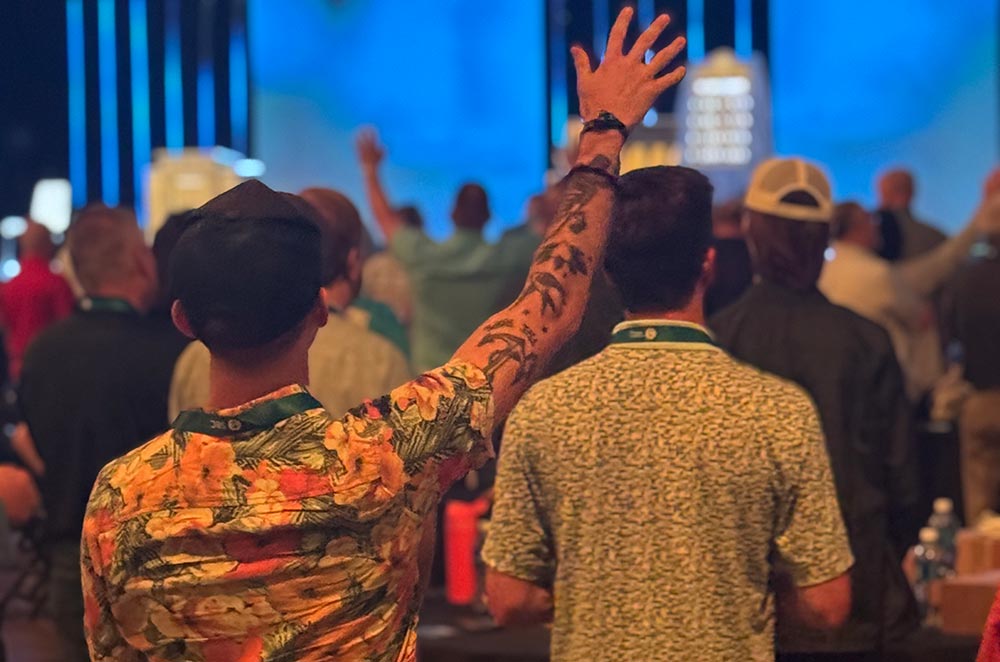Replanting an existing church in my experience is a lot like turning the light switch off, rearranging the furniture while it’s dark and then flipping the switch back on. When the lights come back on, people can be surprised. Replanting can be a turbo-charged change process. These changes are best made with the Holy Spirit’s leadership and the “remnant” church’s having already agreed to die in order to bear much fruit. What I found is that this “agreement” still doesn’t mean change is readily accepted by the remnant.
I often wonder if it’s wrong to assume that church planters are removed from the “worship wars.” Where planters seem to launch merely starting new traditions, we replanters launch with the presence of past traditions—specifically worship style for this conversation. When there are many changes taking place simultaneously in a replant situation, changes in the congregational worship style is a particularly trying and touchy one. When considering changes in the area of worship you pause for deep reflection, prayer, and strategy.
Our own replant experience is just that, our experience. We are only a year and half removed from our launch, and as I look back there have been some positives in the change process…and some changes were less than positive. I highly recommend the book Rhythms of Grace by Mike Cosper. The subtitle is “How the church’s worship tells the story of the gospel.” In it Cosper mentions several things that urge us to think about gospel-centric worship. It served to shape my thoughts about worship and replanting. Here are some of my key learnings:
If worship isn’t a lifestyle, then corporate worship isn’t worship.
From the start in your replant, you have the opportunity to teach about worship and lay a foundation for new, gospel-centered traditions. Scripture is clear, worship is a lifestyle (Romans 12:1-2). Worship involves us becoming living sacrifices. Cosper makes the point that, if someone merely sees corporate worship as “their” worship, any changes to that “worship” will be taken personally and negatively. The attitude expressed is: “Your changing my worship, and I don’t like it!” But when worship is a lifestyle the corporate gathering is an overflow of our living out the gospel, then worship is not “mine” and not about “me.” Whether or not you agree with those thoughts, before changing worship style, take time to teach and lead your people to discover together what the essence of worship is as an expression of our love for God.
In corporate worship, we rehearse the gospel in order to be sent out to live the gospel.
Again, I found Cosper’s words helpful in getting at the power of the corporate gathering in preparing us to be sent. We must not bend the corporate celebration of the gospel simply to be cool or hip. If replanting a church means replanting worship, it must mean much more than simply changing worship style. I would say that anemic worship probably contributed to the need for our church to be replanted. We gather to rehearse the gospel and scatter to live out the gospel—to be living sacrifices. Before you change style you need to ensure there is depth. Where worship is shallow teach, preach, poke, prod, and lead the congregation in becoming gospel-centered worshipers.
We must not overlook indigenous musical styles in the community of our replant.
In a corporate worship gathering I know what I like and what I desire. I know that quality matters; when it’s lacking I become distracted. I know that leading a stylistic change to bring about the sound that fits my preference does not necessarily mean I am worshipping in an authentic way. Do you notice all the first person personal pronouns in the last few sentences? “I” can be a problem. The style we prefer may fit our preferences but does our style of music match the community where God has placed us? In some cases the musical style being utilized in the worship gathering is already indigenous and may only need to be infused with greater depth and meaning. Style is always secondary to substance but style cannot be completely ignored or subverted to accommodate my preferences.
Exercise caution to not professionalize worship.
When we launched, we were needing help and support and resources in a big way, especially in worship. The only solution I could come up with at the time was to outsource worship. I say “outsource” rather than “import” because we secured someone from outside our fellowship to help get things going temporarily. Fortunately, he was awesome! But he wasn’t part of us. He didn’t live close enough to be part of us. We had great music each weekend, but our outsourced leader didn’t really know our church. He did not live in our community. He did not do life with us. Now, those who lead worship are part of us. In the early days we had a single, imported worship leader on a guitar. Presently we have a band of seven of us. Having worship leaders in house has transformed our corporate gathering. We now gathering as a team to and determine our song choices, our musicians, our liturgy.
We have an incredible, quarterly gathering for local church planters. It is really good. There are preachers who proclaim with depth and there is always really powerful worship. As I gather with those planters and hear their stories and their hip bands, I’m tempted to want to go back and change things up to be more hip and cool. But then our worship wouldn’t be us. It wouldn’t be worship if we were simply trying to mimic another church in another location. It wouldn’t be a rehearsal of the gospel in order to be sent out to live the gospel in our context. It would be anemic worship distracting from the gospel.
In leading a replant, see the opportunity to lead God’s people toward a meaningful and inspirational celebration of the gospel, so they can go and live out the gospel where they live, work and play.
Published September 5, 2017




